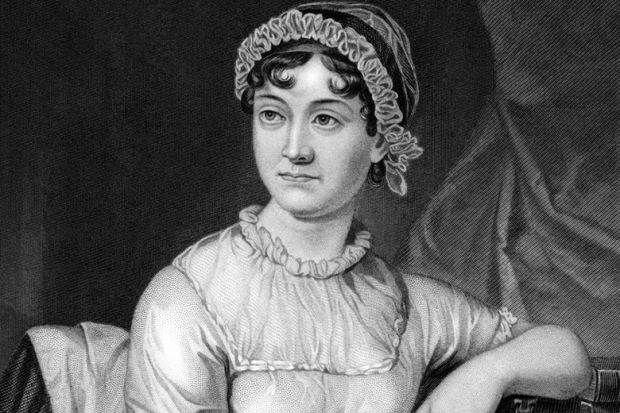"Every time I read Pride and Prejudice”, complained Mark Twain in a letter of 1898, “I want to dig her up and beat her over the skull with her own shin-bone.” But for every bad-tempered Twain, there is a troupe of loyal “Janeites”, devoted to Darcy and in love with Lizzie, ready to be laced into an empire-line dress or to take a tumble from the Cobb in Lyme Regis. Henry James, a more measured admirer of Austen, mocked the uncritical culture around “our dear, everybody’s dear, Jane”. But as Devoney Looser indicates in her new study, The Making of Jane Austen, her celebrity owes something to these very writers. Austen’s literary reputation, she explains, is a posthumous concoction, cultivated first by her siblings, descendants and reviewers, and then by “celebrity endorsements, logrolling quotes, trash talk, commercial efforts and enthusiast activities”.
Looser’s book sets out to understand how the real Austen became the Austen we know by examining the early context, reception and response to her work. She does this in a number of ways: a survey of Austen’s various illustrators and dramatists, and investigations into the political, pedagogical and commercial purposes to which her work has been put. All this, she argues, produces the Austen now so familiar to us.
This Austen “was not born, but rather became, Jane Austen”, Looser announces, rather grandly, in her introduction. It’s an expression that grates, mostly because her analysis is so ploddingly historical that it seems facetious to invoke Simone de Beauvoir’s passionate polemic, The Second Sex, even if it is meant in jest. But the premise of this study, its dedication to scholarly detail and archival excavation, is a stout and sensible one. Looser patiently walks us through the history of Austen illustration, distinguishing between the rustic romantic Gothic trends of early artists such as Ferdinand Pickering and the more saccharine chocolate-box confections of Hugh Thomson. She nicely delineates the story behind Austen’s first dramatist, the remarkable Rosina Filippi, and digs out a charming photo of the women of Wellesley College’s Zeta Alpha literary society, kitted out for their five-act single-sex rendition of Pride and Prejudice. The impulse to dramatise Austen clearly stretches back much further than BBC blockbusters and silver screens.
Looser is a sober and conscientiously corrective guide, constantly prompting us to historicise the conventional ways in which we conceive of Austen. In September 2017, Austen’s face is due to feature on the UK’s new polymer £10 note, but Looser reminds us how readily her name has been invoked for both conservative and progressive politics over the past 150 years. This is a studious and sensible book, driven by a commitment to shedding light on Austen’s work and context. Perhaps because of this, at certain moments, it seems to take an unlikeably proprietorial line. “I don’t worry over much about Jane Austen’s good reputation going forward,” Looser explains, “I worry more about our ability to study it with the historical nuance and cultural scope it deserves.” She attempts to redress this by supplying what she thinks is “more and better information”. But “everybody’s dear Jane” is different for each of us.
Shahidha Bari is senior lecturer in Romanticism, Queen Mary University of London.
The Making of Jane Austen
By Devoney Looser
Johns Hopkins University Press, 304pp, $29.95
ISBN 9781421422824
Published 16 May 2017
Register to continue
Why register?
- Registration is free and only takes a moment
- Once registered, you can read 3 articles a month
- Sign up for our newsletter
Subscribe
Or subscribe for unlimited access to:
- Unlimited access to news, views, insights & reviews
- Digital editions
- Digital access to THE’s university and college rankings analysis
Already registered or a current subscriber? Login




